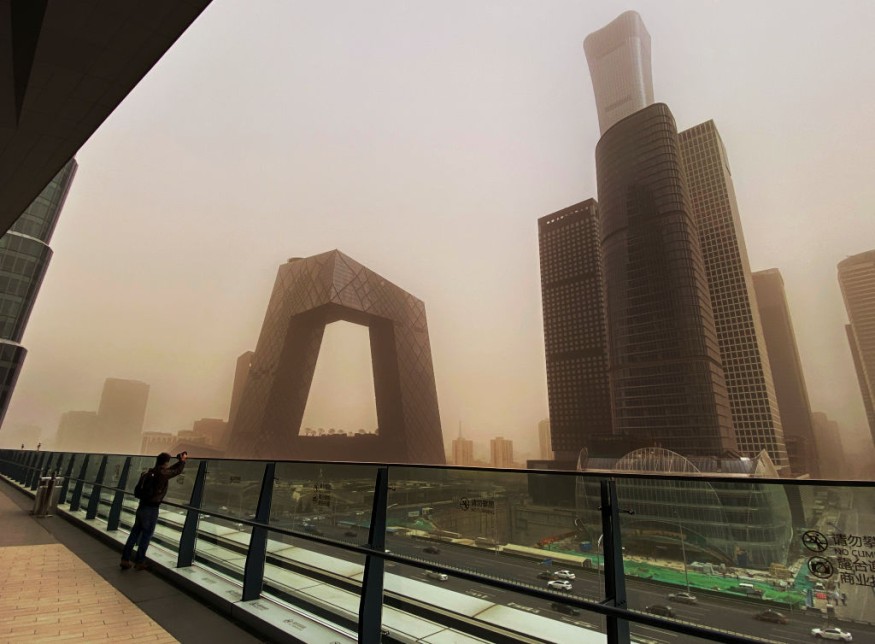Powerful winds blowing in from the Gobi Desert and parts of northwestern China engulfed the Chinese capital Beijing in dense brown dust on Monday, in what the weather bureau described as the worst sandstorm in a decade.

Where the Winds Came From
Sandstorms had extended from Inner Mongolia into the provinces of Gansu, Shanxi, and Hebei, which surround Beijing, according to the China Meteorological Administration, which issued a yellow warning on Monday morning.

On Monday morning, the tops of tower blocks in central Beijing were scarcely visible, and commuters wore makeshift headwear to cover their faces and hair.
"It seems to be the end of the world," said Flora Zou, a 25-year-old Beijing resident who works in the fashion industry. "I really, really don't want to be outdoors in this kind of weather."
Related Article: More Than Meets the Eye: New Study Reveals Benefits of Dust Storms on Marine Life
Beijing Covered in Dust: Travel Advisory
According to China's state news agency Xinhua, heavy sandstorms have struck Mongolia, leaving at least 341 people missing.
Flights have been canceled out of Hohhot, China's Inner Mongolian capital.
According to aviation data provider Variflight, about a quarter of incoming and outbound flights at Beijing Capital International Airport and Beijing Daxing International Airport had been canceled as of midday (0400 GMT), which is higher than average during the sandstorm season.
According to the environment ministry, the sandstorms should move south towards the Yangtze River delta and clear by Wednesday or Thursday.
Due to its proximity to the vast Gobi desert and deforestation and soil erosion in northern China, Beijing experiences annual sandstorms in March and April.
Preservation Efforts
China has been attempting to reforest and preserve the region's ecology to reduce the amount of sand blown into the city.
Beijing has attempted to create air corridors that redirect the wind and allow sand and other contaminants to flow through more easily by planting a "great green wall" of trees to capture incoming dust.
Last year, the environment ministry announced that the condition had changed, with the first storms coming later in the year and lasting less time than they did a decade before.
Beijing and its environs have been subjected to high pollution levels in recent weeks, with the region shrouded in smog during the national parliamentary session, which began on March 5.
"It's hard to say we're moving ahead because you can't see what's in front," Li Shuo, an ecology advisor with Greenpeace in Beijing, tweeted on Monday.
Dust Storm

A dust storm, also known as a sandstorm, is a weather occurrence that often occurs in arid and semi-arid areas. Dust storms form when a powerful breeze, such as a gust front sweeps loose sand and dirt from a dry surface. Saltation and suspension, a mechanism that moves the soil from one site to another, is used to transport fine particles.
Dust storms are common in Asia during the spring season. However, the meteorological spring has only just begun, and northern China has already been blanketed with a massive plume of sand and dust. It has been dubbed the region's biggest and most powerful storm in a decade.
ALSO READ: Texas Power Crisis Can Happen Everywhere Because of Climate Change
For more environmental news, don't forget to follow Nature World News!
© 2025 NatureWorldNews.com All rights reserved. Do not reproduce without permission.





